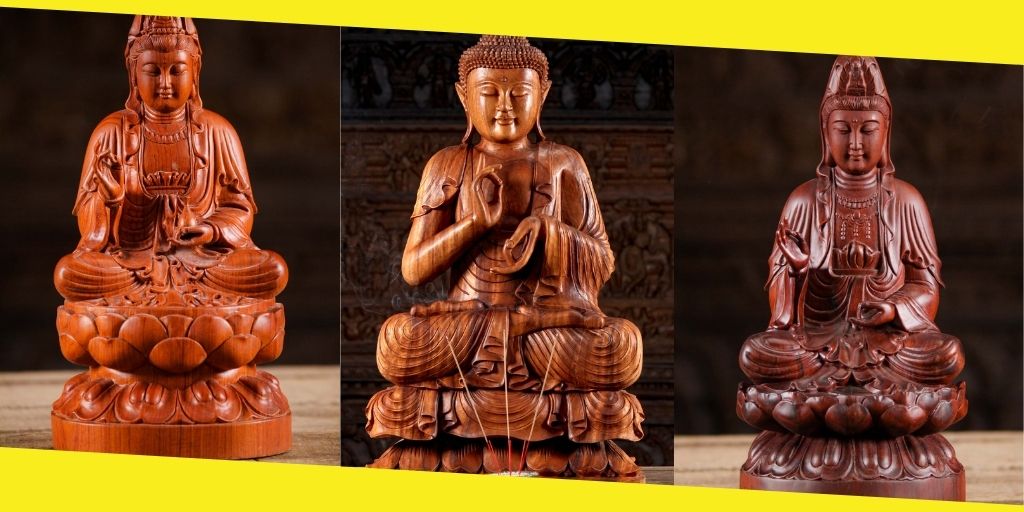There are over 100 various mudras found in Buddhist teachings. Each represents a different kind of energy you want to invite. A wood Buddha statue can also represent different emotions and phases of life.

There have been studies undertaken to understand how Buddhist meditation practices could both inspire relaxation and alertness. It is all about how you are meditating and the time you have been practicing for.
Types of Mudras
#1. Dharmachakra Mudra
Dharmachakra is one of the popular mudras as it is said to be the first mudra used by Buddha in a sermon after he attained enlightenment. This mudra is also known as the Wheel of Dharma. Two circles or wheels are formed by the index finger and thumb of both hands by touching each other’s tips. The left hand, facing inward, is placed in front of the right hand, facing outward.
The mudra represents movement and transition and can be placed in your home to facilitate energy flow.
#2. Vitarka Mudra
This mudra is held at chest level, with the index finger and thumb touching. The remaining three fingers are pointing upward. Vitarka mudra signifies the transmission of Buddhist teachings. It encourages discussion and an uninterrupted flow of wisdom.
The best place to keep a wood Buddha statue with a Vitarka mudra can be in your children’s study room or a library.
#3. Dhyana Mudra
This mudra is also known as the meditation mudra. The gesture is made with both the hands on the lap, the right hand is placed on top of the left, fingers resting on another, and the thumbs facing upward. Dhyana mudra is commonly used during different Buddhist meditation practices.
You can keep this statue in your meditation or prayer room or in any quiet place of your home that you use for mindfulness activities.
#4. Uttarabodhi Mudra
The Uttarabodhi mudra is performed by touching the index fingers, pointing upward, and keeping the rest of the fingers intertwined. This mudra symbolizes enlightenment. It is about joining forces with the universal and divine energy of the world.
You can place a Buddha statue with this mudra in the north or south sections of your home. You may also keep it a high-energy spot in your home or office.
#5. Abhaya Mudra
The Abhaya mudra is performed by placing the right hand at chest level with the palm facing outward and fingers pointing upward. The other hand is placed on the lap with fingers stretched out in front. This mudra signifies fearlessness. It also brings in a sense of protection and peace to your home.
The best place to keep a Buddha statue with Abhaya mudra would be the entrance of your home or office.
You can find many such mudras with different meanings and purposes. For example, Namaskara mudra symbolizes respect and adoration for the divine energy, Bhumisparasa mudra represents unshaken strength in one’s commitment, and so on.
When buying a wood Buddha statue, pay attention to the type of mudra held by Buddha. It will provide insights into the kind of energy you are inviting and the correct placement for the statue. Remember to keep Buddha statues at a certain height from the floor and keep the surrounding area neat.